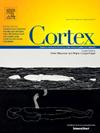Does pupillometry provide a valid measure of spatial attentional bias (pseudoneglect)?
IF 3.2
2区 心理学
Q1 BEHAVIORAL SCIENCES
引用次数: 0
Abstract
Strauch et al. (2022) introduced a novel approach to assess biases of visual attention, by measuring pupillary constriction in response to split-field stimuli, in which a bright patch is presented to one visual field and a dark patch to the other. Their study suggested that pupillary constriction is more pronounced in response to bright stimuli in the left visual field compared to the right, consistent with a neurotypical attentional bias towards the left side (pseudoneglect). This pupillometric bias was also found to correlate with performance on the greyscales task, an established behavioural measure of pseudoneglect. The present study sought to replicate these findings, and investigated the influence of the eye of recording on the pupillary constriction bias measured by this split-field method (n = 80). There was a major influence of the eye of recording, whereby each pupil constricted more to light in the ipsilateral than the contralateral visual field (d = 1.67). Averaging across the eyes, we confirmed stronger pupillary constriction to bright stimuli in the left compared to the right visual field (pseudoneglect), but with a small effect size (d = −.31). While the split-field paradigm does detect pseudoneglect, it does not seem to be especially sensitive, and large sample sizes may be required to detect this subtle bias. However, the method may hold promise for studying stronger attentional biases, such as those seen in spatial neglect.
瞳孔测量法是否提供了空间注意偏差(伪忽略)的有效测量方法?
Strauch等人(2022)引入了一种评估视觉注意偏差的新方法,通过测量瞳孔收缩对分视野刺激的反应,其中一个明亮的斑块呈现在一个视野中,另一个呈现黑暗的斑块。他们的研究表明,与右视野相比,左视野受到明亮刺激时瞳孔收缩更为明显,这与典型的左侧注意力偏向(假性忽视)一致。这种瞳孔偏差也被发现与灰阶任务的表现有关,灰阶任务是一种既定的伪忽略行为测量。本研究试图重复这些发现,并调查了记录眼对这种分场法测量的瞳孔收缩偏差的影响(n = 80)。有一个主要的影响记录眼,其中每个瞳孔收缩更多的光在同侧视野比对侧视野(d = 1.67)。对双眼进行平均,我们证实,与右视野相比,左视野对明亮刺激的瞳孔收缩更强(伪忽略),但效应大小较小(d = - 0.31)。虽然分裂场范式确实检测到伪忽略,但它似乎不是特别敏感,并且可能需要大样本量来检测这种微妙的偏差。然而,这种方法可能有助于研究更强烈的注意偏差,比如在空间忽视中看到的那些。
本文章由计算机程序翻译,如有差异,请以英文原文为准。
求助全文
约1分钟内获得全文
求助全文
来源期刊

Cortex
医学-行为科学
CiteScore
7.00
自引率
5.60%
发文量
250
审稿时长
74 days
期刊介绍:
CORTEX is an international journal devoted to the study of cognition and of the relationship between the nervous system and mental processes, particularly as these are reflected in the behaviour of patients with acquired brain lesions, normal volunteers, children with typical and atypical development, and in the activation of brain regions and systems as recorded by functional neuroimaging techniques. It was founded in 1964 by Ennio De Renzi.
 求助内容:
求助内容: 应助结果提醒方式:
应助结果提醒方式:


